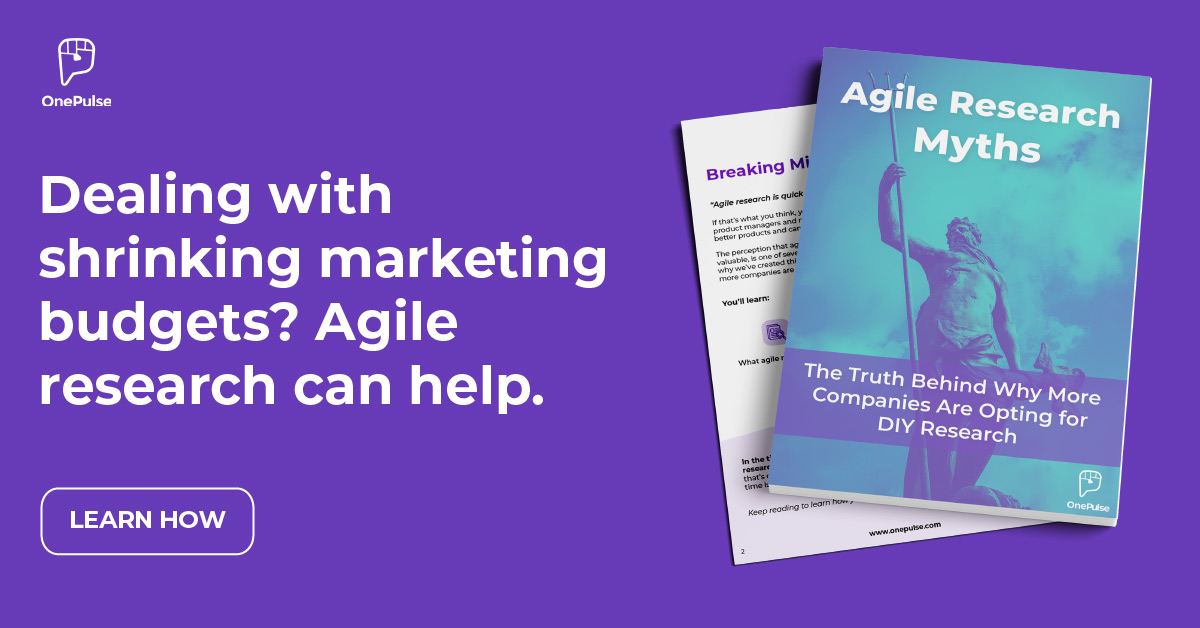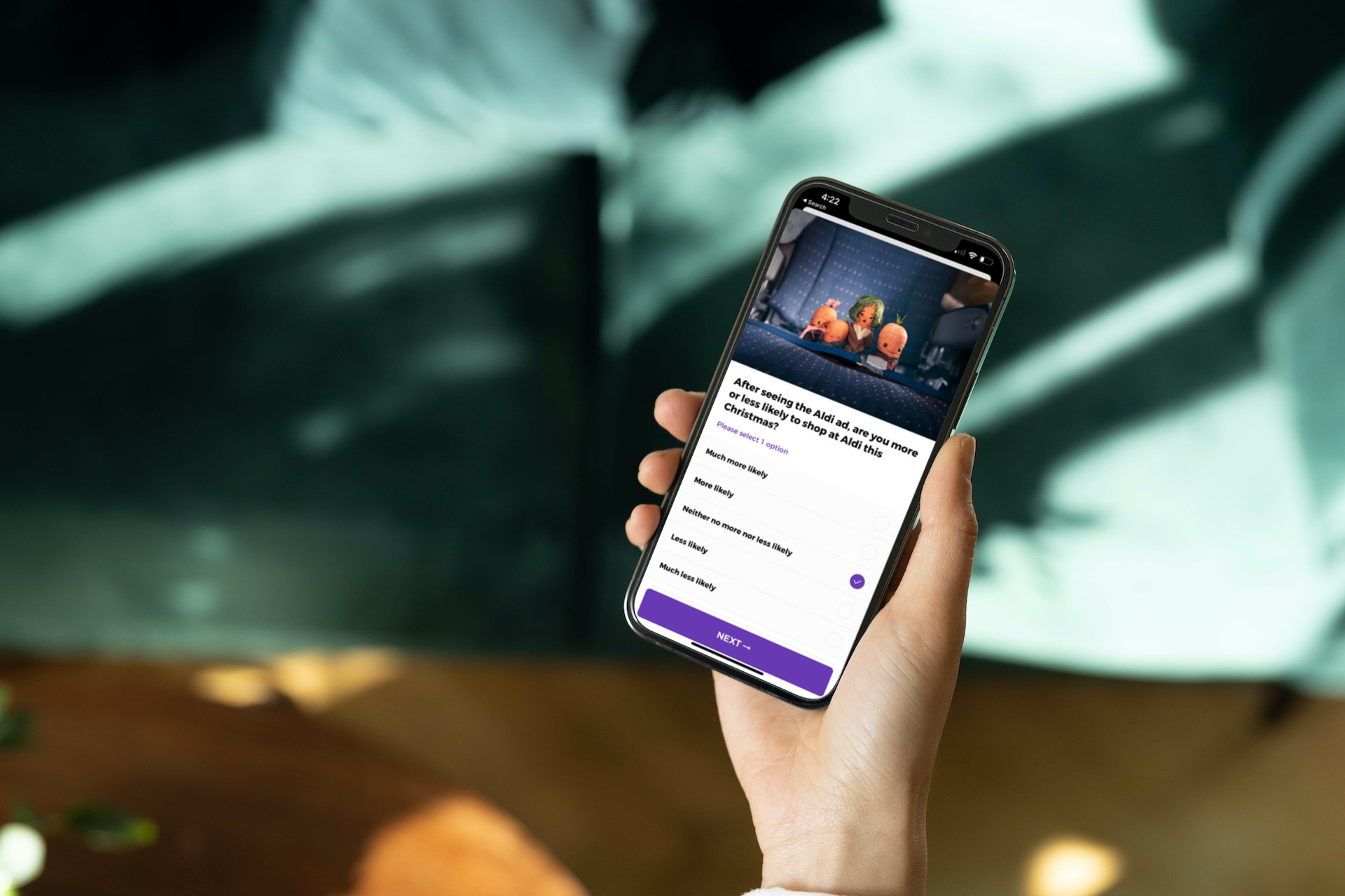How to Use Customer Insight Tools for Better Decision Making
[…]

Understanding the decisions your prospective customers make when buying a product is essential for the continued success of your brand
By gaining an understanding of your target audience’s buying decisions and attitudes, you can adjust your marketing messages to suit their purchasing behaviors, create targeted messages that will truly resonate with them, and time these messages to reach them at the opportune moment.
In-house customer insight tools and surveys are a great way of gathering this understanding quickly, easily, and for significantly lower costs than you would accumulate by hiring an external market research agency.
But once you have your customer insight tool in hand, how should you use it to get the best understanding and insights for your business and brand? Read on to find out.
Recommended: 7+ Market Research Types (And When to Use Each)
Use in-house customer insights surveys to understand:
1. What drives your ideal customer
Knowing what drives your ideal customer to make certain buying decisions is paramount. What makes your ideal customer tick? What do they care about? What does their typical day look like? What do they value? What problems do they have and need to solve?
You can do this with your in-house surveys by asking questions such as:
- “Do you make an effort to stay on top of the latest trends?”
- “Which would you pick out of these two: Fashion or comfort?”
- “Rank these features from most to least important when you’re considering buying a product: Style; price; environmental impact; brand reputation”
- “Do you have as much time for yourself in the day as you would like?”
- “Which of these images appeals to you most?,” followed by “Why did you pick this one?”
These are exactly the things you need to know in order to grow and shape your products and services to make them as attractive and appealing to your target audience as possible. The better you get to know your ideal customer and what drives them, the greater the revenue you’ll see in the long run!

2. The types of buying behaviour your ideal customer typically displays.
There are four typical types of buying behaviors: Complex behavior, dissonance reducing behavior, habitual behavior, and variety-seeking behavior.
- Complex behavior becomes apparent during big purchases, where a customer will consider each of their buying options especially carefully, even carrying out thorough research, before committing to a purchase.
- Dissonance reducing behavior is where buyers are afraid of making the wrong decision and experiencing buyer’s remorse. As a result, they are likely to distance themselves (or bury their head in the sand) from research around a brand or model and focus solely on the product itself.
- Habitual behavior is used to describe consumers who buy the same products over and over, without taking time to consider the alternative options available.
- Variety seeking behavior is the opposite of habitual behavior, in that it describes someone who prefers to seek out new products to make their favorite, or simply for enjoyment.
By understanding the kinds of buyer behavior your target audience exhibits, you can tap into this within your product development. For example, if your typical customer exhibits variety-seeking behaviors, you may subsequently decide to plan for a brand new product release at the next available opportunity.
To find out your target audiences’ typical buying behaviors, ask questions such as:
- “Do you generally buy things on impulse, or do you like to go away and think about it first?” with answers such as “I buy on impulse” “I like to meditate on it first,” and “it depends” (If using OnePulse, you could create this as a branching question to discover more about why this is the case!).
- “Do you prefer to buy the same products again and again, or do you like to try new things?”
- “You’re going out for dinner! Are you more likely to: a) Visit an old favorite restaurant, or b) Go somewhere new?
3. What’s potentially stopping them from making a purchase
Is your product too expensive? Are your consumers worried about its impact on the environment? Is there a particular feature they’d like to see before they buy it?
Knowing what is stopping someone from buying, or how to change their minds about making a purchase before they get to the checkout, are two essential components to improving and lowering the barriers to purchase.
You can find this out with your in-house customer insight tools and surveys by asking questions such as:
- “How much would you be willing to pay for this product?” (on a sliding scale from one to 10).
- “Is there anything you don’t like about this product? Tell us why!” (leaving them with a blank space in which to explain their answer).
- Which of these features, if any, would stop you from buying a [insert example product]?” (include answer options such as “an expensive price tag,” “a negative impact on the environment,” “if it isn’t cruelty-free and/or vegan,” etc.).
4. What their customer journey is from start to finish
Every customer is an individual with a unique story. However, chances are, your target audience will go through a similar journey before coming across your product. Having a knowledge of this journey will enable you to step in at the precise moment your target audience needs your offering!
How do they decide they need a product or service like yours? How do they go about researching those kinds of products? Do they make these decisions alone, or are they influenced by others?
You can find out all this and more with your in-house surveys by asking questions such as:
- “Where do you typically search for [type of product]?”
- “Have you seen any of your friends and family use [product]?”
- “When would you realise you need [product]?”
5. How they perceive your brand
Understanding how your ideal audience looks on your brand will have a huge impact on whether they buy from you or not. Using the responses from this, you can make updates to your brand that will help it stand out from the crowd, or more become more appealing than previously.
To find this out, you could ask questions using your customer insight tool such as:
- “Which of these words do you think best describes [brand name]?” (offering multiple choice answers to pick from).
- “Do you recognize this logo?” (accompanied by a picture).
- How does this advert make you feel? (including a video link to one of your recent ad campaigns, with a box in which to provide an open-ended answer).
In Conclusion
The better you understand your customer’s purchasing decisions, the greater your opportunities will be to make those all-important product improvements and sales!
Of course, being able to gain these kinds of insights also means choosing the best customer insights tool in the first instance.
OnePulse’s customer insight tool and surveys not only grant access to our community hundreds of thousands of respondents, but has everything you need to gain a thorough and in-depth understanding of your customer’s purchasing behaviors, and subsequently help you make the right moves to smash your sales targets and see your profits soar.
Curious to know how? Contact us today for more information, or sign up and start pulsing now to see this for yourself!
Related posts








